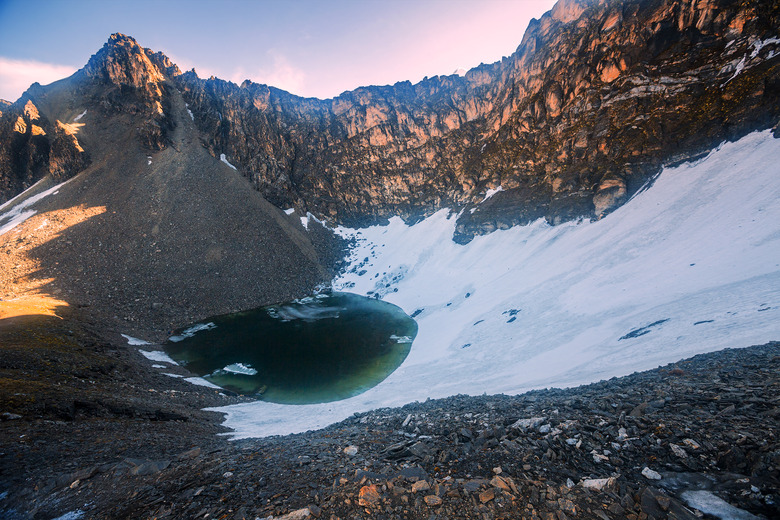Meet "Skeleton Lake," The Home To Mysterious Human Remains
They call it "Skeleton Lake."
It sits in India's Himalayan mountains, about 16,500 feet above sea level. At 130 feet wide, Roopkund Lake (as it's officially called) remains frozen for most of the year, but when the weather warms up, the lake melts to reveal a disturbing surprise: hundreds of human skeletons, some even with flesh preserved.
Scientists have wondered for years where these skeletons came from, and a new genetic analysis is offering some answers.
Strangers in the Lake
Strangers in the Lake
It's still unknown who exactly these people were and how they ended up in Skeleton Lake. According to reporting from the New York Times, many believe they died simultaneously at the hands of a single catastrophic event, likely more than 1,000 years ago. But scientists in India, the United States and Germany recently carried out a genetic analysis that potentially disproves that theory.
The study, published Aug. 20 on Nature.com, evaluated 38 skeletons from the lake, using their DNA to infer that the dead gathered in Roopkund in several rounds, spread across a millennium.
What Really Happened
What Really Happened
Geneticist and anthropologist Jennifer Raff told the New York Times that the new study has provided a "far richer view into the possible histories of this site" than previous efforts had. Rock slides, human activity, and migrating ice have disturbed the remains over the years, making it difficult to understand when and how the dead made their way to Skeleton Lake.
However, genetic analysis from this study has helped decode the frozen graveyard. The researchers extracted DNA from dozens of samples of skeletons, ultimately identifying 23 males and 15 females that fit into three genetic groups. Of these samples, 23 featured ancestry typical to that of modern South Asians, and their remains were deposited in several occurrences between the seventh and 10th centuries.
Two more genetic groups appeared within the lake between the 17th and 20th centuries: one skeleton showed East Asian-related ancestry, and 14 demonstrated eastern Mediterranean ancestry.
So scientists now know more than they used to about the corpses in Skeleton Lake – but they still don't know how they got there.
The Study's Story
The Study's Story
Geneticist Kumarasamy Thangaraj from the CSIR Centre for Cellular and Molecular Biology in India kicked off research of the lake 10 years ago, when he sequenced the mitochondrial DNA of 72 skeletons, according to Science Alert. Thangaraj and his colleagues concluded that several skeletons from the lake demonstrated local Indian ancestry, while others appeared to have come from West Eurasia. Further investigations began from there, eventually culminating in the current genetic analysis.
Cite This Article
MLA
Swanston, Brenna. "Meet "Skeleton Lake," The Home To Mysterious Human Remains" sciencing.com, https://www.sciencing.com/frozen-lake-in-the-himalayas-13721442/. 30 August 2019.
APA
Swanston, Brenna. (2019, August 30). Meet "Skeleton Lake," The Home To Mysterious Human Remains. sciencing.com. Retrieved from https://www.sciencing.com/frozen-lake-in-the-himalayas-13721442/
Chicago
Swanston, Brenna. Meet "Skeleton Lake," The Home To Mysterious Human Remains last modified March 24, 2022. https://www.sciencing.com/frozen-lake-in-the-himalayas-13721442/
